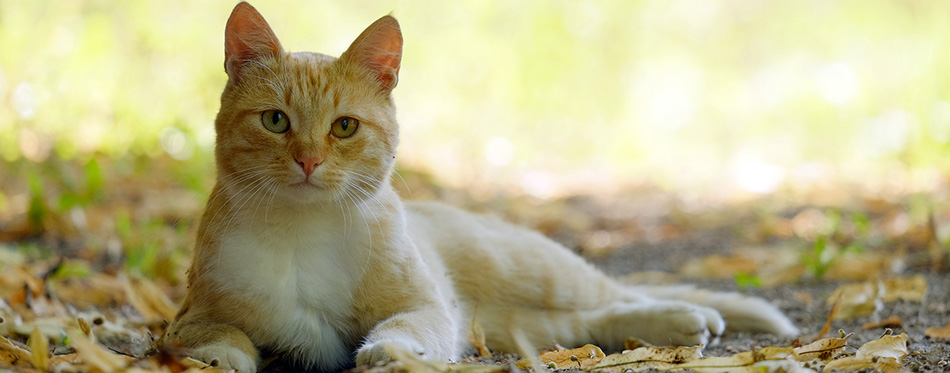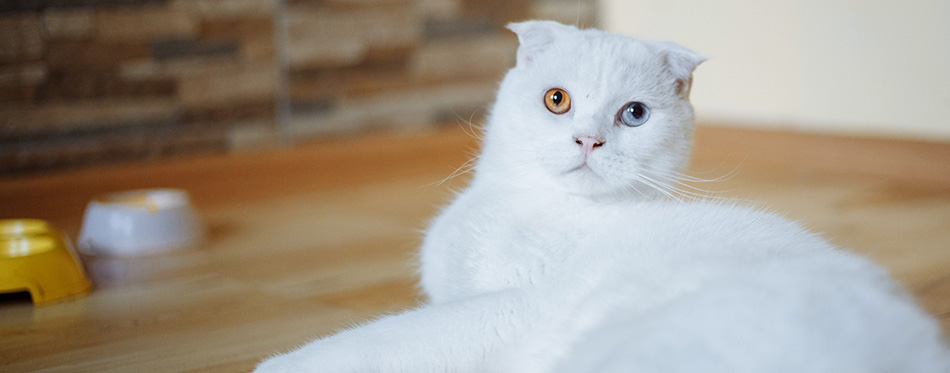It is hard if not impossible, to overlook the spectacular, rare splendor of kitties with multi-colored eyes, each with a different color. It becomes even more extraordinary for a feline with many colors in a single eye, but they do exist! No matter the pattern of the spread, kitties that come with many colors in their eyes got them as a resultant effect of a unique condition medically referred to as heterochromia. But don’t be alarmed; heterochromia is never a clinical condition as cats that have them have never had a record of any adverse effects.
Kitties that are born with heterochromia usually come in white colors or they will have some part of their bodies covered in white and they owe the multiple colors in their eye to that same gene that made their fur to be white. Cats with multiple eye colors are referred to as odd-eyed cats, and the condition is not restricted to the feline population, such has been observed in some breeds of dogs, and though it is very rare, there are humans who were born with heterochromia. If you are interested in finding out why this condition occurs in cats, be my guest.

Types of Heterochromia
Heterochromia is a Greek word gotten from the term heterochromia iridis, they may sound like technical jargons, but the meaning is simply irises with different colors. Heterochromia comes in two types, we have;
- Complete Heterochromia: This occurs when a kitty has two colors independently in each eye, for instance, one may be green and the other blue.
- Sectoral Heterochromia: In this type of situation, the iris of one eye will have two different colors, meaning that one eye will be split into two colors like green and blue.
So, what gives rise to such strange conditions? Experts have established that it is all from the feline’s gene, which is a determinant of pigmentation. When a kitten is born, it normally comes with blue eyes. The color change won’t happen until it’s 7 to 12 weeks old, and this is when the pigment called melanin starts to move into the kitten’s iris. The amount of melanin that eventually moves into each eye determines the color it will have. However, there are some cats whose eyes remain blue for life; this simply means that no melanin moved into the eye.
The genes that are responsible for bi-colored, or all white cats also causes most of the heterochromia cases we see. With the right genetic mix, the condition is possible in any cat. As a kitten grows, their genes may be able to stop the melanin from reaching one of their eyes, which will then remain blue for life, and this explains complete heterochromia.
Sectoral heterochromia becomes possible with divergent concentrations of melanin spreading all over one iris. As the color is determined by the melanin, it can give rise to one eye having multiple colors, which is awesome.
Multi-Colored eyes in the feline population are truly beautiful, but then, when you observe that your cat is developing multi-colored eyes after maturity, such situations call for immediate medical attention. However, if the eye color change occurs within the kitty’s first 12 weeks, there is no cause for alarm, but after that, it may be an indication of eye problems like iron deposits, inflammation, as well as blood in your furry friend’s eye.
What Cat Breed Can be Affected With Heterochromia?
This type of condition is possible in any cat; however, it has been found to occur more in certain breeds. In fact, heterochromia can even occur in breeds of dogs like border collies or huskies, and we would not be totally wrong if you believe that it can happen in humans. However, unlike the felines, multiple eye color is much more uncommon among humans and when it is seen, it is referred to as cat eyes.
The feline breeds that are more susceptible to multiple colored eyes include;
- Turkish Angora
- Persian Oriental Shorthair
- Sphynx
- Turkish Van
- Japanese Bobtail
- Khao Manee
These exceptional felines are actually highly valued in Turkey, to the extent that, the Turkish government had to step in to preserve as well as protect their own Turkish Angoras that were born with heterochromia. The government of the country went into partnership with the Ankara Zoo since 1917, and both parties have been working on keeping these cats in circulation. The natives are so enamored with the breeds that they had to use an odd-eyed Turkish Van known as Baskat as the brand ambassador for the FIBA World Tournament of 2010!
The multi-color eyed cat also showed up in the Islamic world, according to their history; the great prophet Mohammed’s pet was an odd-eyed kitty called Muezza, It would appear that these unique cats are cherished, and accepted the world over, and in many diverse cultures as well as religious beliefs.

Symptoms of Heterochromia in Cats
Although no specific health risk has been associated with an odd-eyed cat, cat parents who adopt them love to keep them away from the bright sun, or even get a cute pair of shades for them, as the condition has been found to make them a bit more sensitive to sunlight than others. According to findings, if the pigment is unprotected to aid them in blocking the bright light, even with the constriction of the kitty’s pupil, more light will get at the retina located at the back of the eye, and this results in pains. This is comparable to when a human sees a flash or looks directly at the sunlight by mistake.
Now that you have understood the reason behind multi-colors in a kitty’s eyes, you will be able to educate others on this rare genetic condition, when next you come into contact with an odd-eyed cat. When it comes to health, the felines with multi-colored eyes are just as healthy as other cats and are outstandingly beautiful with it. So don’t go thinking that anything is wrong with one of these adorable felines when you see them at a shelter; they are sure to get heads turning if you make them a new addition to your family. However, all felines are actually loveable, cute as well as unique in their own special way, and cats born with heterochromia are no exception!

